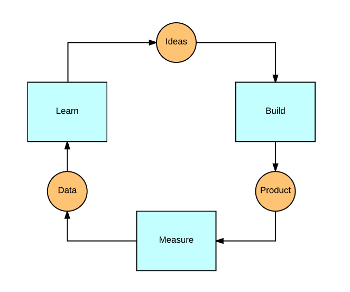
Books can be a great way for Entrepreneurs to gain and/or extend their expertise. In our on-going segment Reading List, get insight and reviews on the books the experts are reading. In the latest installment, we will be reviewing…
The Lean Startup
By Eric Ries
Description from Amazon.com:
Most startups fail. But many of those failures are preventable. The Lean Startup is a new approach being adopted across the globe, changing the way companies are built and new products are launched.
Eric Ries defines a startup as an organization dedicated to creating something new under conditions of extreme uncertainty. This is just as true for one person in a garage or a group of seasoned professionals in a Fortune 500 boardroom. What they have in common is a mission to penetrate that fog of uncertainty to discover a successful path to a sustainable business.
The Lean Startup approach fosters companies that are both more capital efficient and that leverage human creativity more effectively. Inspired by lessons from lean manufacturing, it relies on “validated learning,” rapid scientific experimentation, as well as a number of counter-intuitive practices that shorten product development cycles, measure actual progress without resorting to vanity metrics, and learn what customers really want. It enables a company to shift directions with agility, altering plans inch by inch, minute by minute.
Rather than wasting time creating elaborate business plans, The Lean Startup offers entrepreneurs – in companies of all sizes – a way to test their vision continuously, to adapt and adjust before it’s too late. Ries provides a scientific approach to creating and managing successful startups in a age when companies need to innovate more than ever.
Overview
There are concepts in this world that I just can’t wrap my head around. Child-proof caps for medication is a prime example of this. I understand why we need them, but how do you open them? Design concepts for laying out a room, I realize that I’ll never understand why some patterns and colors go together. Or why people order tequila. Or why women…well, maybe we should just move on…
But every once in awhile, an idea or a concept just clicks for me. It just MAKES SENSE.
I remember being fourteen when algebra went from being a bunch of weird letters and symbols mixed into my math expressions to all of the sudden you couldn’t hide “x” from me if you tried. I remember being sixteen and suddenly driving a manual transmission vehicle became second nature. I remember playing baseball when I was younger and finally understanding how hitting a curve ball. I remember finally figuring out how chop sticks worked.
I bring all of this up because my best description of The Lean Startup is that finally, author Eric Ries, took this concept of building a business, of creating a successful startup, and he made it just MAKE SENSE. I had tried starting several businesses before. I tried starting a business on my own. I tried it with friends. I tried services. I tried IT. And until I read this book I felt like I was trying to read a menu written in Chinese while hanging upside down with my eyes crossed.
Before reading Mr. Ries words, I thought to build a successful business you either need to be a) incredibly luck or b) do copious amounts of research and build these astronomically large project. But Mr. Ries open my eyes to a different way. In this book, he talks about building a “Minimal Viable Product” – or doing just the bare minimum that is required to provide value to your target audience, and then get it in front of that audience as soon as possible to capture actual feedback.
He talks about building a product or company by implementing a series of “experiments.” In these experiments, you build a hypothesis based on a set of data that you’ve collected, and change one variable to understand its effect on the bigger picture. Then, through A|B testing or various other methods, you test that hypothesis. If the hypothesis is proven true, you keep it. If it isn’t, then you roll back. And the goal throughout all of this is to learn as quickly as you can through capturing actual data from real customers.
Reading this book triggered so many “light bulb” moments when things just made sense. I want to relate it to a person experience of mine, and how it could have turned out VERY different had I read this book 10 years ago.
Applying this Concept to my own Personal Experience
I was working with this budding start up in my younger days that wanted to automate the reminder of special events. An intriguing idea for sure, but I had no idea if there was a market for it. As far as I could tell, there wasn’t another company offering similar services.
So a team of us came together and started trying to refine this idea. We were all smart people, having 10 or more years in different complimentary industries. A few of us even had MBAs from well respected institutions. We were sure that we had everything we needed to succeed. And as this idea was getting off the ground, it was determined that myself, as the “IT Founder,” would be in charge of building out a website to manage these “orders.”
This website was to be based completely on our own design. We never sought input from potential clients. So, in hindsight, we had no idea what features to develop within our product to support their needs and keep them coming back.
Not to mention, having no interaction with potential end users, we had no idea what medium the clients would want to engage our product. This latter point led to one of the bigger fights I got into with another one of our founders, because we had differing opinions about whether we should support a mobile app out of the gate. Ironically, looking back, neither one of us was right, because neither of us had talked to a single prospective client about what they wanted.
So what happened? Sales teams couldn’t start selling because the software wasn’t complete. Another flaw in our business model because technology should never be looked at as anything more than an enabler. And our software engineer (me) burnt out because he was the only one working on an idea that he wasn’t sure would bear fruit. After a few months of late nights and nothing to show, another intriguing idea fell by the wayside.
Following Mr. Ries concepts, we could tested this concept rather easily. Initially, all we need was a simple spreadsheet to track the orders. The spreadsheet would have provided us with enough capability to test a “Minimal Viable Product” and prove the value of the idea. If we were smart, we could have also used this approach to determine what information we needed to collect from our user community. Through these initial interactions with actual end users, we would have been able to identify the frequency and medium our customers wanted to interact with our product. Which ultimately would have allowed us to better focus on energies on design an app for the platform that users choose.
Major Concept
Mr. Ries idea of the “Built-Measure-Learn” feedback loop is, in my humble opinion, nothing short of brilliant.
The image below is recreated from page 85 in the book, and it is the central idea of everything that Mr. Ries preaches.

The “Ideas” above are what Mr. Ries refers to as “experiments.” Meaning they need to be small in scope, and focus on one specific variable to test. Then you build a “Product” to test the “Idea” and capture measurable “Data” to learn from. Based on the findings from the “Data” collected, new ideas are formed and the process begins again. The process is about continuously refining your business model, one variable at a time, and using direct customer feedback to determine which ideas you keep and which you roll back.
Favorite Quotes
“Validated learning is the process of demonstrating empirically that a team has discovered valuable truths about a startup’s present and future business prospects. It is more concrete, more accurate, and faster than market forecasting or classical business planning. It is the principal antidote to the lethal problem of achieving failure: successfully executing a plan that leads nowhere.” – page 49
“Every business plan begins with a set of assumptions. It lays out a strategy that takes those assumptions as a given and proceeds to show how to achieve the company’s vision. Because the assumptions haven’t been proved to be true (they are assumptions, after all) and in fact are often erroneous, the goal of a startup’s early efforts should be to test them as quickly as possible.” – page 91
“Startup productivity is not about cranking out more widgets or features. It is about aligning our efforts with a business and product that are working to create value and drive growth.” – page 159
“The ability to learn faster from customers is the essential competitive advantage that startups most possess.” – pages 199-200
Recommendations
Now that this article is over, click on the link below and order from Amazon IMMEDIATELY! This is a MUST READ for any aspiring entrepreneur, and a book that anyone from any walk of business can gain value from.
The Lean Startup can be purchased from Amazon at the link below: